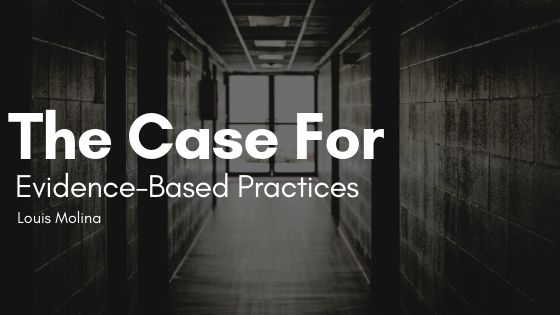Evidence-based programs offered in both prisons and jails have the ability to lower recidivism, but only if the prison/jail systems that these providers operate in are true partners and collaborators in the delivery of the evidence-based programming being offered. An operational synergy and human service ethos needs to exist within these systems for the chance to achieve positive outcomes. The field of medicine and the operation of hospitals have been influenced by evidence-based practices and patients have benefited, as an example, from getting the proper dosage of medication through a typed versus a handwritten prescription, or from the proper inventory of tools and devices used during surgery to ensure an accounting of all items post-surgery. However for this to work in the field of medicine, both the medical professionals and the overall operational management of the hospital must have evidence-based practices that inform the mechanisms and processes in place for achieving successful outcomes.
Correctional systems that embrace evidence-based practices may be able to accelerate at a faster pace than policing systems did at operational implementation. The reason for this from my perspective is that most correctional systems have nonprofit and faith-based programs that have academically trained practitioners already servicing the population within the facilities under the prisons/jails custodial care; and in many cases, the delivery of these program services are being observed by uniformed correctional staff for security reasons. Whereas in policing the effectiveness of enforcement strategies in many cases are being evaluated by academic criminal justice scholars in a way that practitioners may not understand, thus making it difficult to alter the enforcement strategy in real-time. This is a challenge in policing because both the academics and the practitioners are operating in two separate worlds. As of late this divide is being overcome by more uniform police professionals either on their own or through the support of their agencies that have been investing in the academic advancement of their uniform staff; so the adoption of evidence-based enforcement and crime prevention strategies are being more realized and police agencies are making more informed operational decisions.
For corrections, this leap to a more evidence-based system may not be as challenging given the number of academically trained practitioners already embedded in the system. And when we look at scalability to try and see how we can succeed on a national and statewide scale, often times the conversation is around scaling up or mirroring the success of a program. My contention is that it is not the program itself, but how the uniform correctional apparatus or the interaction between the program providers and uniform staff for a particular program are interacting with each other, especially the custodial participants.
The incarcerated population has been reduced through various forms of alternatives to incarceration, and if we as a Nation ever eliminate cash bail, this will reduce the population further. Until then we have to focus, especially at the local jail level, on reducing recidivism through holistic programming with continued uninterrupted support upon release for mental health, medical, educational and other social services that can disrupt a person’s rehabilitation process if interrupted.
My hope is that we as a society can move the correctional pillar of the criminal justice system that has been historically focused on warehousing the incarcerated population instead of assisting them to reach a better place in their post-release life. I am confident that the correctional system has the capability to adapt to an evidence-based, informed and forward-looking system; the leaders of the correctional system just need the will to do so. Bureaucracy has proven its ability to be adaptive with some resistance, but adaptive none-the-less. So for those that say change can’t happen, I remind them that we have heard that it can’t be done many times in our recent history. When we increased the minimum wage, approved same-sex marriage and decided that stop, question, and frisk (SQF) was no longer going to be used as enforcement strategy, the bureaucratic system successfully adapted to these changes. And when looking at these changes: raising the minimum wage did not disrupt the State’s economy; approving same-sex marriage made all families equal and made us morally stronger as a State; and the end of the arbitrary SQF of predominantly people of color in low income neighborhoods did not result in crime increases, in fact they continue to remain at historically low levels.

